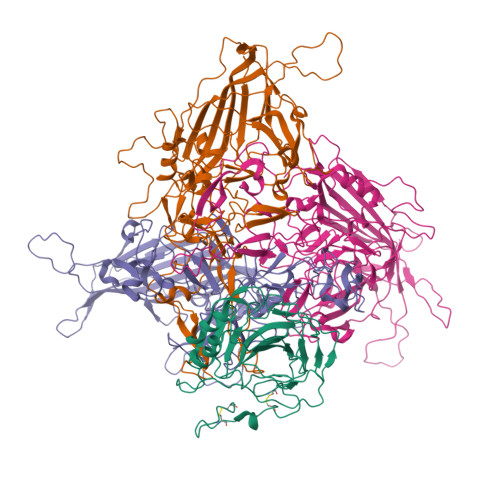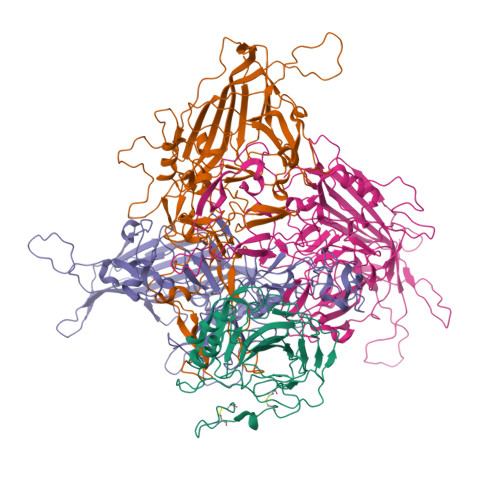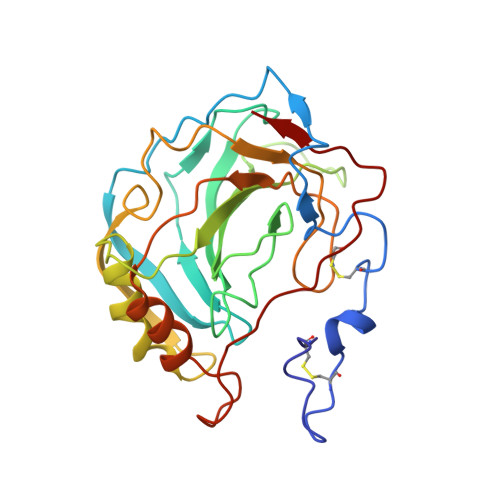Structural basis of the recognition of adeno-associated virus by the neurological system-related receptor carbonic anhydrase IV.
Zhang, R., Liu, Y., Yu, F., Xu, G., Li, L., Li, B., Lou, Z.(2024) PLoS Pathog 20: e1011953-e1011953
- PubMed: 38315719
- DOI: https://doi.org/10.1371/journal.ppat.1011953
- Primary Citation of Related Structures:
8JIF, 8XEG - PubMed Abstract:
Carbonic anhydrase IV (Car4) is a newly identified receptor that allows adeno-associated virus (AAV) 9P31 to cross the blood-brain barrier and achieve efficient infection in the central nervous system (CNS) in mouse models. However, the molecular mechanism by which engineered AAV capsids with 7-mer insertion in the variable region (VR) VIII recognize these novel cellular receptors is unknown. Here we report the cryo-EM structures of AAV9P31 and its complex with Mus musculus Car4 at atomic resolution by utilizing the block-based reconstruction (BBR) method. The structures demonstrated that Car4 binds to the protrusions at 3-fold axes of the capsid. The inserted 7-mer extends into a hydrophobic region near the catalytic center of Car4 to form stable interactions. Mutagenesis studies also identified the key residues in Car4 responsible for the AAV9P31 interaction. These findings provide new insights into the novel receptor recognition mechanism of AAV generated by directed evolution and highlight the application of the BBR method to studying the virus-receptor molecular mechanism.
Organizational Affiliation:
Jinshan Hospital, Institute for Translational Brain Research, Fudan University, Shanghai, China.


















